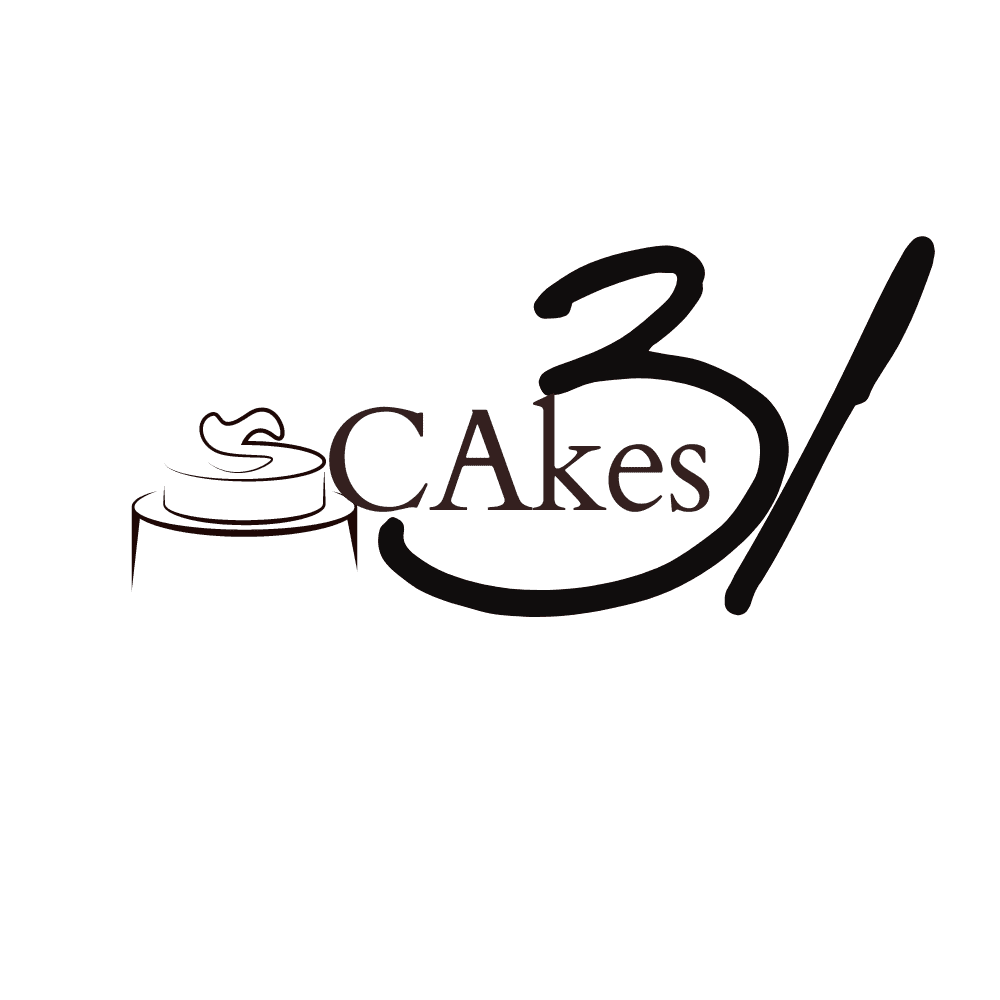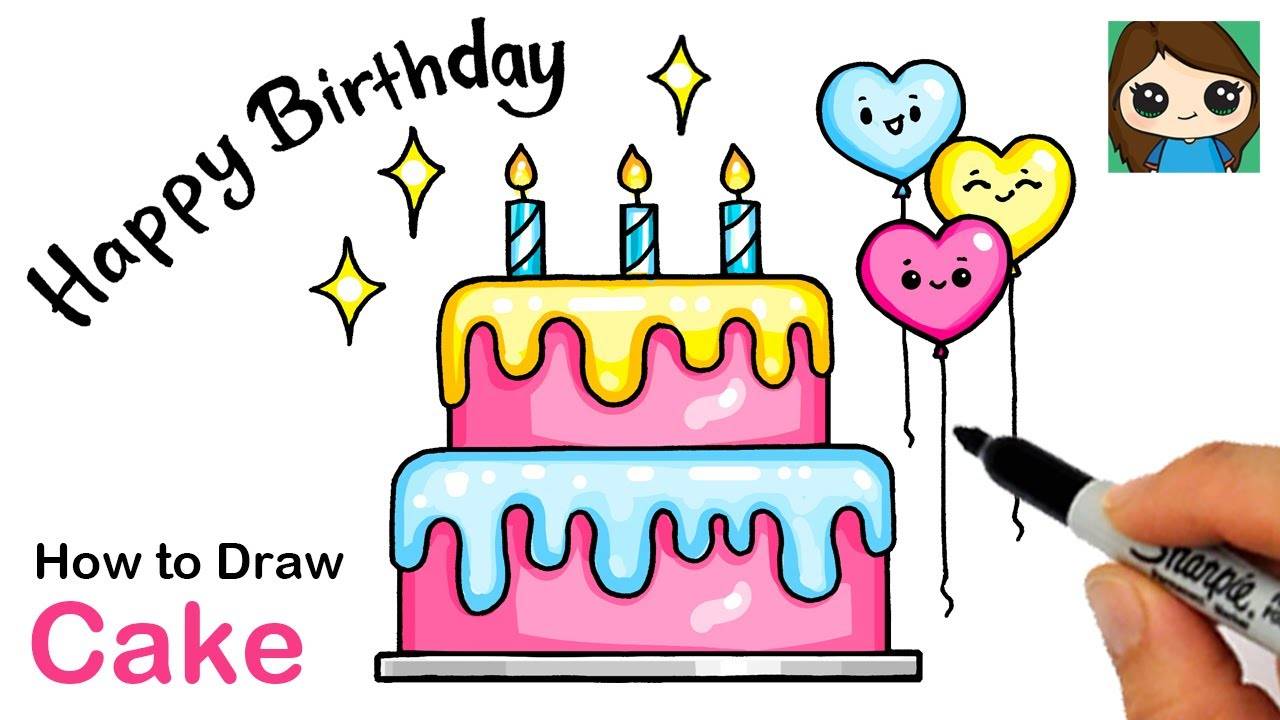How To Draw a birthday cake ,may spark imaginations and breathe life into festivities. You may start by imagining the joyful scene: sprinkles swirling amidst swirls of frosting, candles blazing upon a tiered delicacy.
Every every element, from the cake’s attractive proportions to eye-pleasing decorative flourishes, is revealed through a straightforward pencil sketch. Varied in form and texture, no two cakes are pretty alike. Yet each, in its way, captures the magic of birthday wishes and fellowship around the festive board.
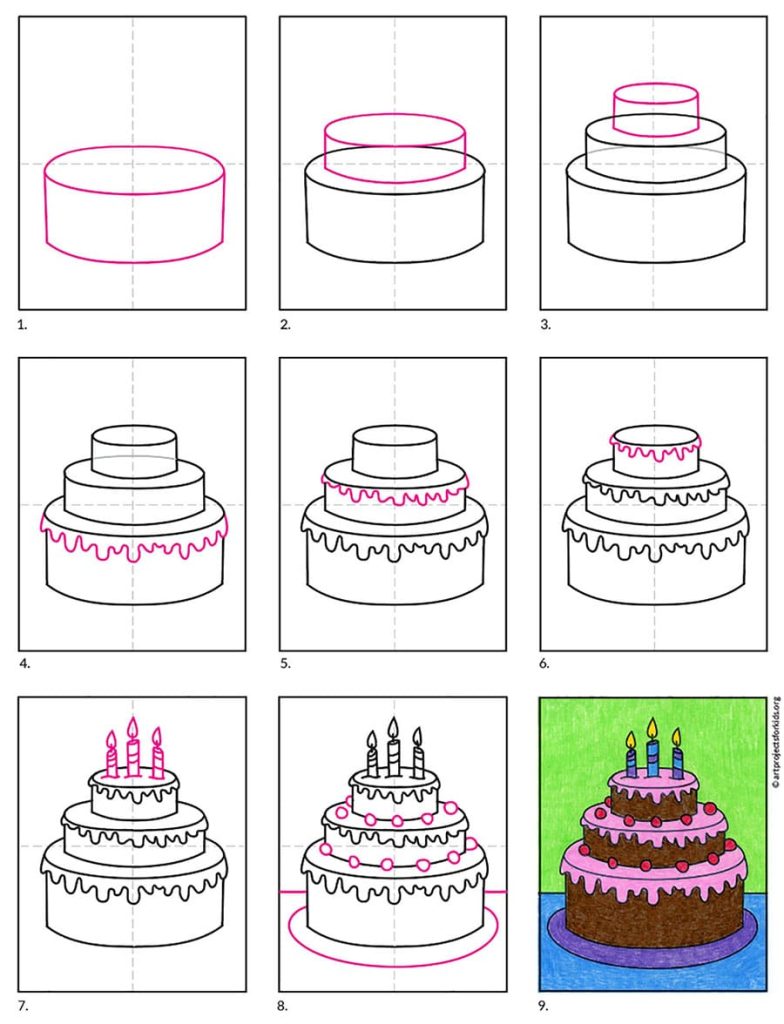
Credit: artprojectsforkids.org
Materials Needed
Materials and their uses lend themselves to artistic expression. A pencil lays the foundation, an eraser refines, while colored pencils enliven. A black pen brings definition and more – glitter pens add radiance, stickers bring charm, watercolors lavish, and stencils provide the pattern. Tools become playthings as vision transforms into reality. Orderly setup eases the hand, and creativity may flow unfettered. Before long, a unique cake arises – a petite beauty to brighten any celebratory scene. Though humble the materials, great is the gift of joy imparted.
Essential Supplies
Firstly, it is essential that one prepares an environment conducive to focus and creative expression prior to beginning the artistic venture of cake depiction. With slight consideration given to selecting a locale suitable for concentrated endeavors and assembling the implements necessary to transfer one’s vision to the Page skillfully, one cultivates optimal conditions for one’s innate talents to emerge unencumbered.
Let us break down the preparation process systematically. Identify a quiet locale affording comfortable posture and ample illumination, whether naturally from windows admitting daylight or artificially from a task lamp. Clear sight of one’s work is paramount. Ensure one’s work surface is uncluttered and level to avoid frustration.
Inventory the tools required to fulfill one’s objectives: graphite sticks for initial sketches, erasers for correcting flaws, and paper to bear the emerging creation, in addition to colored drawing implements to imbue life into the work. Maintain ready access to said provisions to remain centered on the work. Employ an orderly receptacle, box, or tray containing one’s instruments.
Hone graphite sticks to a serviceable point. Rectify erasers of debris that may mar efforts. Choose a paper of fitting scope. With one’s station thus ready, one can indulge creative instincts freely, take pleasure in the experience, and allow innate gifts to be fully expressed.
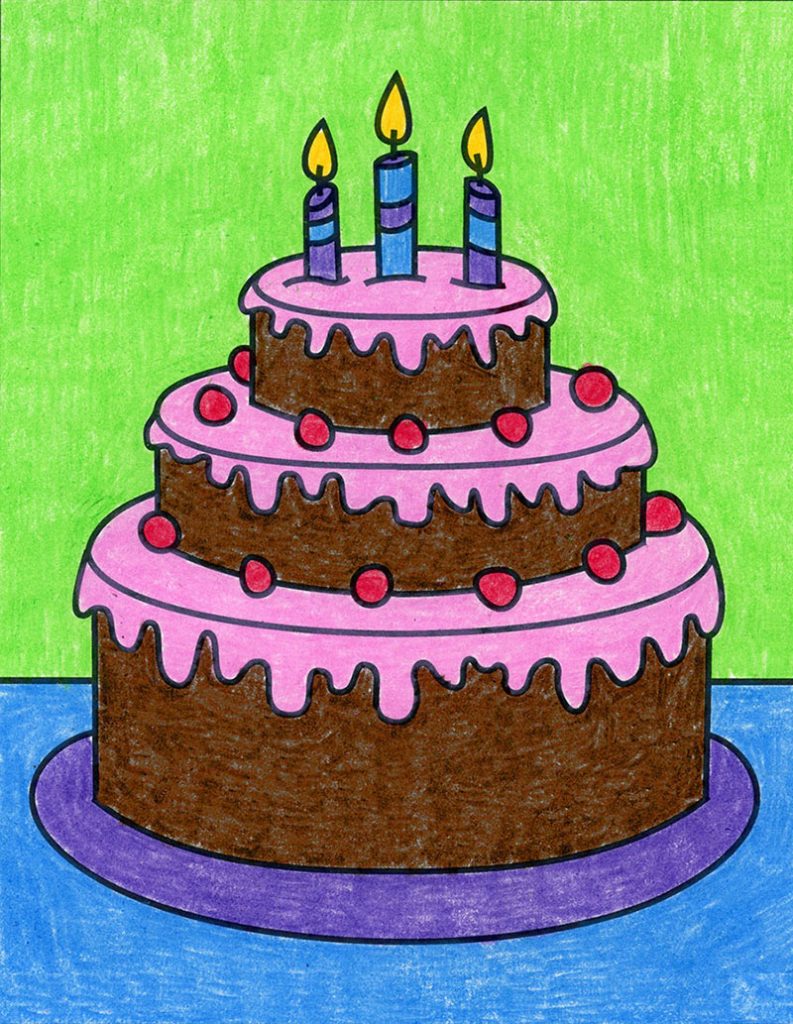
why i need learn how to draw a birthday cake?
For a number of reasons, being able to sketch a birthday cake can be entertaining and practical.
- Creativity: It lets you show off your original ideas and sense of flair.
- Celebration: Birthday cards or invites can be enhanced and made more memorable by drawing a birthday cake.
- Fun Activity: Especially during holidays, it’s a wonderful opportunity to strengthen relationships with friends and family.
- Art Skills: It enhances your ability to draw by helping you with aspects like color blending, shading, and shapes.
- Personal Touch: A hand-drawn cake lends a personal touch to any event, making it feel more significant.
- Practice: This is a great way to learn about various textures and designs while also getting some practice drawing food.
All in all, it’s a fun way to rejoice and spread happiness!
Sketching The Basic Form
Learning to sketch a birthday cake can be fun and stimulating. Begin with simple shapes. This portion will guide you through drafting the fundamental form. Follow these steps, and you will have a lovely cake sketch quickly.
Drawing The Cake Platform
First, draft an oval. This will serve as the platform for the cake. Be sure the corners are gently curved—a softer appearance results. Next, draw a smaller oval atop the first. This will be the top surface of the confection. Connect the edges of the upper oval to the lower. These lines will form the sides of the cake.
Adding Levels
To incorporate levels:
- Draw an additional smaller oval above the first.
- Ensure this second oval is centered.
- Draw an even smaller oval on top of this new form.
- Connect the edges of this topmost oval to the smaller oval beneath.
- Repeat these steps to add more levels should you desire a taller pastry.
Here is a basic table to illustrate the process:
Step // Description
1 // Draft an oval.
2 // Draw a smaller oval atop the first.
3 // Connect the edges of the upper oval to the lower.
4 // Draw an additional smaller oval above the first.
5 // Draw an even smaller oval on the new form.
6 // Connect the edges of this topmost oval to the smaller oval beneath.
Remember to keep your lines faint. This allows easy erasure and correction of errors.
Crafting The Outline
Formulating the outline is the initial step in sketching a birthday cake. It establishes the foundation for the entire drawing, and a clear outline aids in accurately shaping the cake. This section will guide you through defining edges and refining the form.
Manipulating Margins
Let’s begin shaping this birthday pastry by sketching its undermost inventory. Scratch a rectangle to represent the fundamental platform—guarantee its perimeters are regulated and symmetrical. Subsequently, delineate a level line crosswise over to represent the highest border. Draw an analogously situated line underneath to represent the lowest edge. Join the finishes with vertical lines for a well-defined foundation.
Moving ahead, visualize including an extra layer on high by etching another, somewhat more modest rectangle. Carry on with guaranteeing tidy edges. At that point, endeavor to refine subtle elements to make the dessert appear progressively sensible. Round the corners delicately to discard severity and include a touch of gentleness. Curve the highest and lowest edges for a delicate look as well. Place a little rectangular candle base toward the highest point with a slim vertical line representing the wick emerging. Complete the sketch with a little circular flame to top it off – your cake is beginning to take form wonderfully.
Adding Finishing Flourishes
Taking the sketch to the following dimension includes finishing flourishes to make the pastry drawing unique. The center initially focused on drawing candles to include some fun in the procedure. Sketch little rectangular shapes on the height of the cake portraying the candles themselves. At that point, flame-shaped teardrops rise from the highest point of every wick to finish off their appearance. You can likewise add shading, stripes, or spots to singular candles to make them stand separated. With the representation currently finished, you’ve effectively shaped this birthday delight masterfully – time to appreciate!
Incorporating Decorations
Decorations make the cake look festive. Start by drawing intricate icing designs on the cake in looping curls and whirls. These motifs can be elaborate or understated.
Next, add embellishments on the intricate iced surface. Sprinkles can be small circles, stars, or intricate shapes you like. Remember to decorate the top of the cake with petite flowers, elaborate stars, or intricate hearts scattered artistically.
For a final flourish, add an ornate cake topper. This could be an intricate flag, an elaborate number, or a personalized birthday message.
Here is a simple yet embellished table for decoration ideas:
Decoration Example
Icing Designs Intricate curls and whirls
Sprinkles, Circles, stars, intricate shapes
Cake Topper Intricate flag, elaborate number, personalized message
These ornate details make your birthday cake drawing look fantastic and festive!
Applying Color
Coloring your birthday cake drawing brings it to vibrant life, adding fun and energy. Follow these steps to make your cake look striking and lively.
Choosing A Vibrant Palette
Choose colors that make your cake pop. Think about the birthday theme and the feeling you want to evoke. Use bright and cheerful colors for a kid’s party. Soft pastels work well for a more elegant look and feel.
- Primary Colors: Red, blue, and yellow can make the cake stand out vibrantly.
- Secondary Colors: Mix primary colors for green, orange, and purple.
- Neutral Colors: White, black, and gray can balance the bright colors energetically.
If you need help selecting hues that look good together, use a color wheel. It shows which colors appear vibrant when paired.
Coloring Techniques
Use different techniques to apply color creatively. This can make your drawing more interesting and lively.
- Shading: Add dark colors to one side to show light and shadow vividly.
- Blending: Mix two colors smoothly for depth.
- Layering: Apply multiple layers of color for dimension.
Markers, colored pencils, and crayons are all good options. Each has a different effect when bringing your drawing to vibrant life.
Tool Effect
Markers Bright and bold
Colored Pencils Soft and blendable
Crayons Textured and vibrant
Final Touches on a Birthday Cake Drawing
To bring a basic birthday cake drawing to life with realism and depth, focus on adding highlights and shadows. Highlights simulate light glinting across the cake’s surface, making it shine. Use white or a light-colored pencil to dot tiny bright spots on areas where the light hits directly, such as atop frosting swirls and candle flames. Shadows lend dimension by suggesting where light does not touch as fully. Apply a darker version of the base color underneath layers, decorations, and anywhere the cake clears the surface, like the candles below. The interplay of highlights popping against shadows anchors the cake steady on the imaginary plate below. Consider where to place each effect deliberately to transform a flat image into a realistic scene bursting forth from the Page.
Easy Mistakes When Depicting A Birthday Pastry Can Ruin Your Sketch. However, Let’s Study Typical Flubs And Prevent Them.
Proportions Often Trip Beginners Up. Structured Tiers Balance Best. Frequently, Layers Differ Wrongly. For Instance:
- Base
- Accurate sizing
- Too modest
- Center
- Reasonable
- Overambitious
- Peak
- Smallest
- Overambitious
Use A ruler For Evenness. Realism Results.
Too Many Particulars Muddle As Well. Basic Styles Fare Better Usually. Complication Can Mess. Concentrate On:
Initially, Circles Or Rectangles For Levels.
Simply Candles And Sprinkles.
Shade Variety Minimal And Balanced.
Less Excels. A Clean, Straightforward Pastry Looks Elegant.
By Dodging These Habitual Bloopers, Your Birthday Pastry Sketch Will Impress.
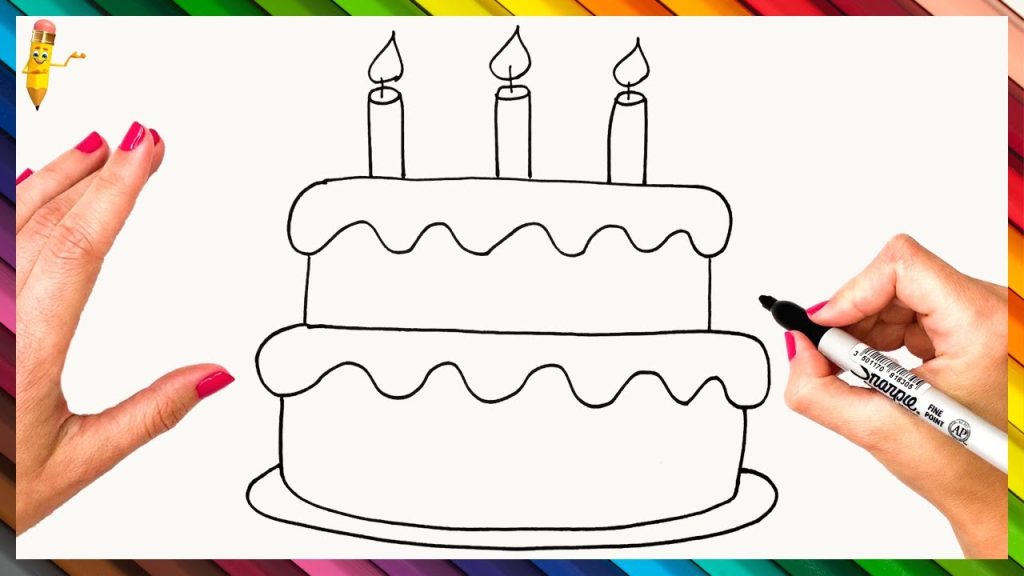
Frequently Asked Questions
How To Depict A Straightforward Birthday Pastry?
To Represent A Basic Birthday Pastry:
- Begin With A Rectangle Base.
- Stack Smaller Rectangles Above For Levels.
- Add candles atop, and adorn it with sprinkles, icing, or fruit.
At Last, Details Like Shadows And Highlights For Realism.
What Gear Do I Require To Represent A Birthday Pastry?
You will need paper, pencils, an eraser, and colored pencils or markers for the decoration in order to sketch a birthday pastry. Optional Tools: Comprise A Ruler For Straight Lines And A Blender For Shading. These Will Help You Create A Detailed And Colorful Representation.
How to Make Your Cake Drawing Appear 3D on the Page?
Implement shading and sense of perspective to:
- Implemented drawings seem three-dimensional.
- Raw the bottom layer slightly angled, and add shadows under each stratum and beneath flickering candles.
- Light edges where light naturally strikes.
Sing such techniques lends depth and authenticity to your depiction.
Can Youngsters Easily Illustrate a Birthday Cake?
Yes, youths can effortlessly portray a cake for celebrating birth by following basic procedures. Initiate with fundamental geometrical figures like rectangles and ovals. Include festive accouterments like tapers and sprinkles. Encourage inventiveness by permitting the selection of hues and motifs. Straightforward instructions render the task pleasurable and accessible for children.
Conclusion
Crafting a picture of a cake for a birthday can be a fun and rewarding experience. Follow the steps carefully, and practice to enhance your skills. Share your artwork with friends and loved ones. Remember, each cake you portray will have unique characteristics. Keep experimenting with diverse designs and methods.
Happy sketching!
